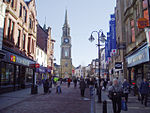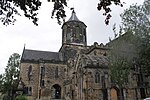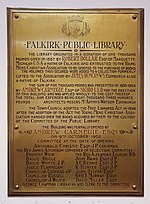Firs Park
Buildings and structures in FalkirkDefunct football venues in ScotlandDefunct greyhound racing venues in the United KingdomDemolished buildings and structures in ScotlandDemolished sports venues in the United Kingdom ... and 7 more
East Stirlingshire F.C.Greyhound racing in ScotlandScottish Football League venuesSports venues completed in 1921Sports venues demolished in 2012Sports venues in Falkirk (council area)Use British English from March 2014

Firs Park was a football stadium in Falkirk, Scotland, which was the home of East Stirlingshire F.C. between 1921 and 2008. It was located on Firs Street, 0.3 miles north-east of the town centre. At the time of closing the ground had a capacity of 1,800 with 200 seated.
Excerpt from the Wikipedia article Firs Park (License: CC BY-SA 3.0, Authors, Images).Firs Park
Firs Street,
Geographical coordinates (GPS) Address Nearby Places Show on map
Geographical coordinates (GPS)
| Latitude | Longitude |
|---|---|
| N 56.005 ° | E -3.7788888888889 ° |
Address
Firs Street
Firs Street
FK2 7AY , Middlefield
Scotland, United Kingdom
Open on Google Maps









